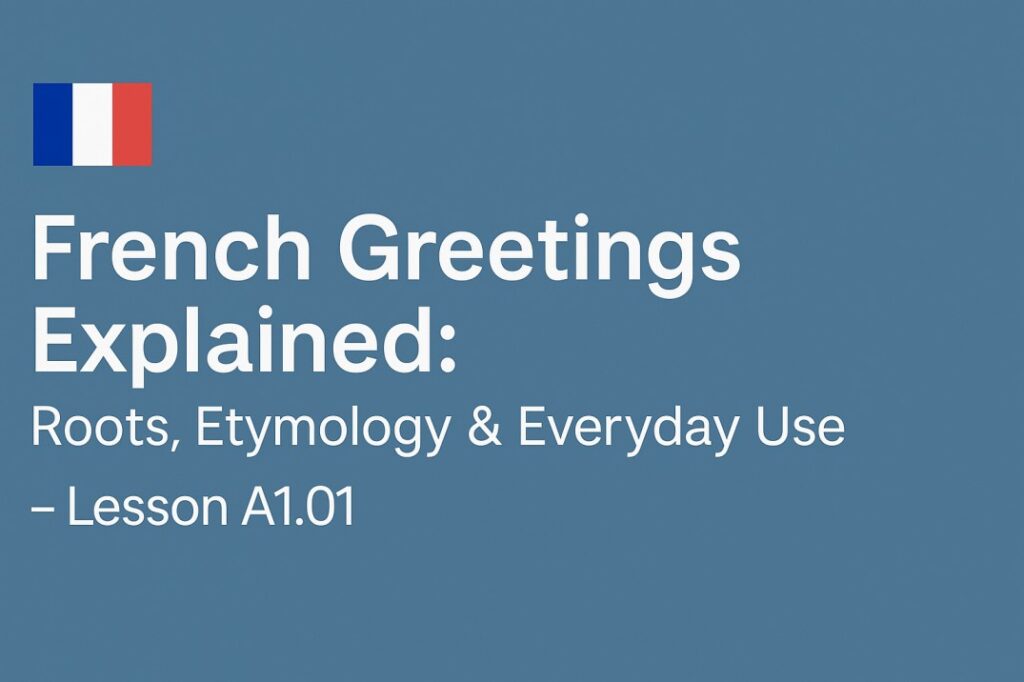When learning French, one of the very first things you’ll encounter is greetings. Not only are they essential to polite conversation, but they also reveal a lot about French culture and language roots. In this article, we will explore the most common greetings in French, breaking down each expression, its meaning, and where it comes from.
1. Bonjour – “Good Day”
Literal Translation: Bon (good) + jour (day)
Etymology: Bon comes from Latin bonus, meaning “good”. Jour comes from Latin diurnum, meaning “daytime” or “day”.
Usage: This is the most common daytime greeting. Used until late afternoon (around 5-6 PM), it’s appropriate in both formal and informal contexts.
Pronunciation Tip: The “n” in bon is nasalized – don’t pronounce it like in English. Try: /bɔ̃.ʒuʁ/
2. Bonsoir – “Good Evening”
Literal Translation: Bon (good) + soir (evening)
Etymology: Soir comes from Latin serum (evening, late hour).
Usage: Used after 6 PM or when it’s getting dark. It’s the evening equivalent of bonjour.
3. Salut – “Hi / Bye”
Literal Translation: No direct translation, but it expresses a friendly greeting.
Etymology: From Latin salus, meaning health or well-being.
Usage: Informal greeting used among friends, family, and peers. It can also be used to say goodbye.
4. Coucou – “Hey there!”
Literal Translation: Onomatopoeic (from the sound of a cuckoo bird).
Etymology: Derived from le coucou, the cuckoo bird, often associated with playful surprise.
Usage: Very informal. Typically used between close friends, family, or in a playful context.
🎓 Interactive Exercise: Match the Meaning of French Greetings
Select the correct English meaning for each French greeting:

